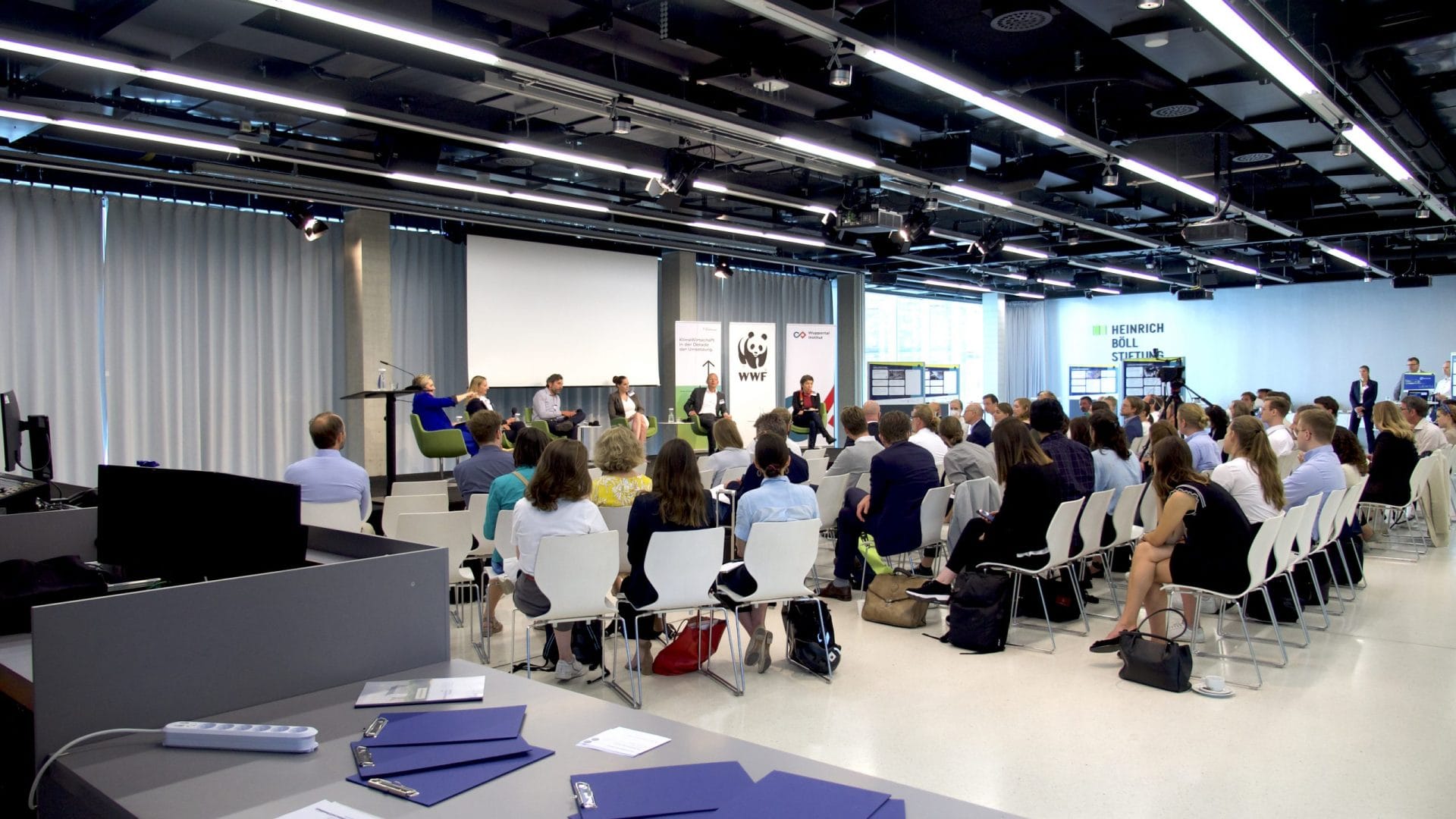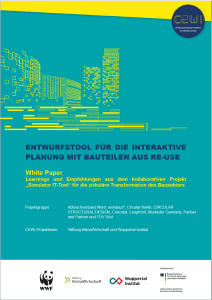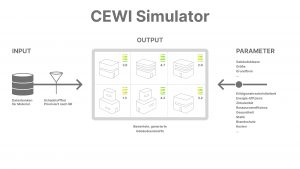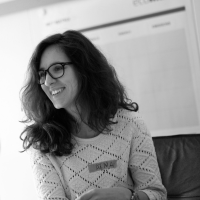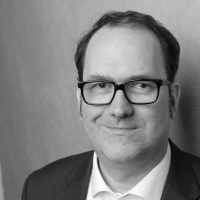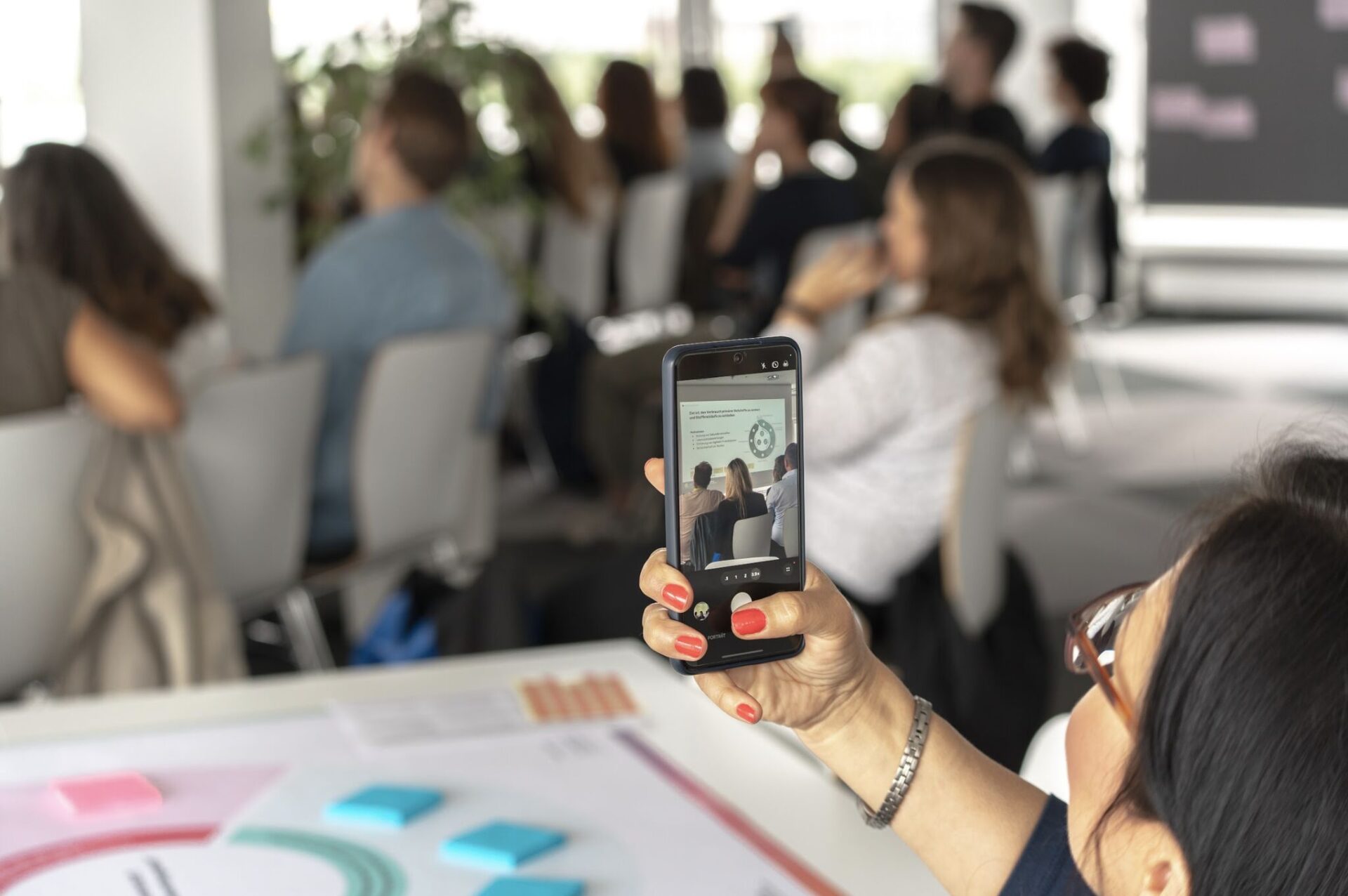Preliminary study to define the specifications for an interactive design tool for multidisciplinary planning with re-use building components that generates possible building types on the basis of the anthropogenic stock.
INITIATOR
Stiftung KlimaWirtschaft, Wuppertal Institut
PARTNERS
Abbruchverband Nord, assiduus³, Circular Berlin, CIRCULAR STRUCTURAL DESIGN, Concular, Loopfront, Madaster Germany, Partner und Partne, TÜV Süd
DATE
June 2021 – June 2023
The challenge
The construction industry faces the enormous challenge of significantly reducing negative environmental impacts on climate and resource consumption and, in addition to technical feasibility, also developing incentives for this necessary change. The increasing scarcity of resources calls for new and simple solutions to remove used resources from buildings with low CO2 emissions and to transfer them to existing and new buildings in the sense of a circular economy. The associated transformation process is tantamount to a cultural change in the sense of a “form follows resources availability” architectural language. This project creates the technical prerequisites for such a change.
Our approach
Actors in construction have a special responsibility and must massively counteract this material consumption. The CEWI project “Innovation Engine Circular Economy”, launched in 2021, brings together around 30 actors from the construction industry to develop new business models to transform the construction industry from a linear to a circular economy. These participants cover the entire value chain of architects, engineers, project developers, builders, suppliers, demolition and construction companies, banks, and various associations and organizations as well as startups with digital solutions.
Within this project, several stakeholders with different backgrounds from the entire construction value chain are working together:
- Industry partners such as architectural firm, engineering firm, and builder (Partners and Partners, Circular Structural Design, Assiduus Development) who can ensure market demand, and have understanding of the current gaps in research and practical application of reuse in construction.
- Innovators working on digitizing the construction process and materials (Madaster, Concular, Loopfront). Two of the companies are already working with the reused materials and components and have experience in digital tool development.
- NGO, association and sustainability-focused service (Circular City e.V., Abbruchverband Nord e.V., TÜV SÜD.) to ensure added value for social and environmental aspects.
The diversity of the team allows for different perspectives, including social and environmental perspectives of the project. The first interim result of this concept will be published in a book chapter “Concept for a generative design tool based on anthropogenic material stock” in the Engineering Yearbook 2023.
The outcomes
A digital design tool as the direct project outcome opens up new possibilities for planners working with secondary building materials. Based on the planning approach “form follows resources availability”, the tool helps to integrate components of the “anthropogenic stock” into the design and to optimize designs according to resource and emission aspects.
Further steps
Several approaches are planned to bring the project results into practice. First, the tool development concept will be open source, accessible to the various industry partners for further development. It will allow broader access for the potential partners to “connect” and build future “interfaces” on it.
Secondly, software companies will be involved already in the project development phase, which on the one hand will be potential “testers” of the tool, but also can potentially integrate it into their portfolio of digital tools already available on the market, so that it can directly reach the main target group – architects.
Last but not least, as part of the consortium, several associations and research partners are involved and will take the lead in disseminating the results through conferences and public promotional activities.

